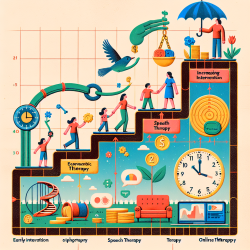As practitioners dedicated to improving the lives of children with Autism Spectrum Disorder (ASD), it's crucial to understand the economic burden that families face and how timely interventions can alleviate some of this burden. A recent study titled Effect of Time Interval From Diagnosis to Treatment on Economic Burden in Families of Children With Autism Spectrum Disorder provides valuable insights that can inform our practice and potentially lead to better outcomes for children and their families.
Key Findings from the Study
The study, conducted in Changsha, Hunan Province, China, examined the economic costs incurred by families of children with ASD. The research focused on two critical periods: the 12 months following diagnosis and the most recent 12 months during the course of ASD. The findings were significant:
- 46.3% of children began intervention within 1 month of diagnosis.
- The median total economic costs in the first 12 months after diagnosis were 26,502.26 RMB, while the costs in the most recent 12 months were 29,411.91 RMB.
- A delay of over 6 months from diagnosis to treatment was associated with significantly higher direct economic costs and total economic burden.
Implications for Practitioners
The data underscores the importance of early intervention. Here are some actionable steps practitioners can take:
- Encourage Early Diagnosis: Advocate for early screening and diagnosis to ensure children receive timely interventions.
- Streamline Access to Services: Work on reducing the time between diagnosis and the start of treatment. This can involve coordinating with various stakeholders, including schools and healthcare providers.
- Educate Families: Inform families about the economic benefits of early intervention, which can motivate them to seek treatment sooner.
- Leverage Online Therapy: Utilize online therapy services like TinyEYE to provide immediate access to speech and behavioral therapies, thereby reducing delays.
Encouraging Further Research
While this study provides valuable insights, further research is needed to explore the long-term economic impacts of early intervention across different regions and healthcare systems. Practitioners can contribute to this body of knowledge by participating in or conducting similar studies.
In conclusion, shortening the time interval from diagnosis to treatment can significantly reduce the economic burden on families and improve the prognosis for children with ASD. As practitioners, our goal should be to facilitate early intervention and provide families with the resources they need to support their children effectively.
To read the original research paper, please follow this link: Effect of Time Interval From Diagnosis to Treatment on Economic Burden in Families of Children With Autism Spectrum Disorder.










